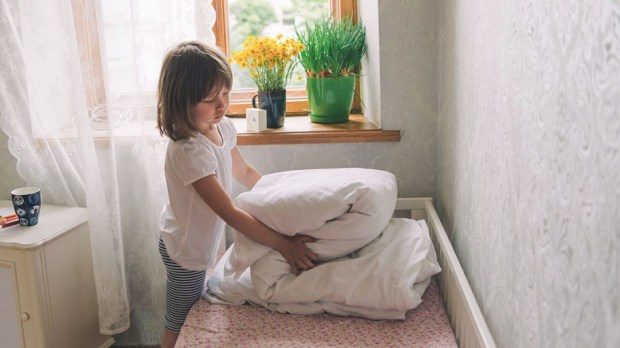No, it’s not an optical illusion: it’s real. As they arrive at school, children of 3 and 4 years of age take off their coats, place them on the floor, take a coat hanger, put the coat on the hanger, snap the top button or zip up the coat, and hang it in a cupboard suited to their height. There are actually eye-witnesses who can testify that this happens every morning.
But when they arrive home, these same children have suffered a sort of “amnesia” that seemingly makes them suddenly forget this ability that they actually have. And, the truth is, whether this phenomenon will take place or not is based not so much on their own choice and behavior, but rather on whether or not the parents have thought about these “superpowers” their children possess, and on whether or not they have placed a coat hanger at a reachable height, and have chosen a suitable place for them to leave their coat when they get home.
Teaching children to be organized does not only translate into making our busy lives that much easier; it is also one of the best legacies we can bequest them. It will help them to be orderly individuals in all areas of their lives, both inwardly and outwardly.
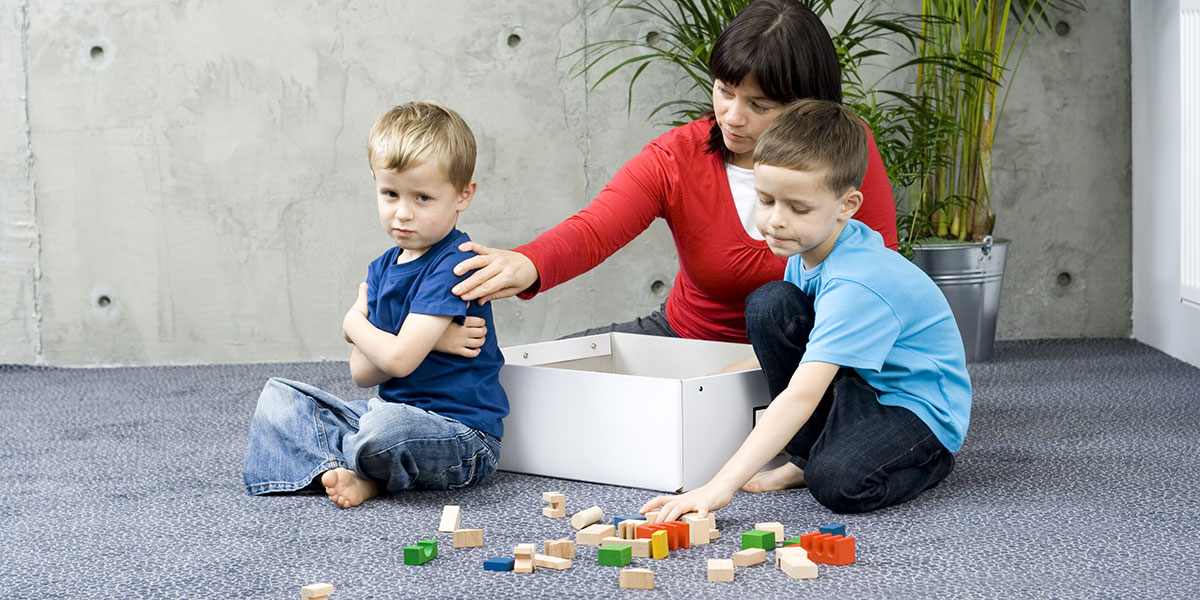
In their book, At Last You Are Going To Organize Your House,Silvia Llorens and Beth Comabella provide a series of tips that you can implement to instill in your children the habit of placing everything where it belongs. Here are some practical tips:
Organizing their room
Here are some tricks to motivate your children to organize, while making it entertaining:
- Have them listen to their favorite music.
- During the process, talk about your memories. They love it and time flies more quickly.
- Take breaks when undertaking large organizing projects. Present the day’s project as a special occasion, and add an incentive, such as ordering pizza delivery for lunch, or watching a movie together (whether a recent blockbuster or a family favorite).
- Even for smaller projects, go out for a snack afterwards, or take them somewhere they enjoy (a park, a friend’s house, etc.): it makes a good reward!
Donate toys they do not use
If they find this difficult, have them place toys they rarely or never use in a separate box, and attach a small sign with a question mark on it. Come to an agreement with them: if after a certain period of time they have not played with a particular toy even once, then you are free to give those toys to a child in need.
Easily accessible storage
The toy boxes should be height-appropriate for each child. The idea of easy accessibility is to make the children as self-sufficient as possible as they grow up. The same is true of their clothes: if your children cannot manage to hang their clothes on a hanger or have difficulty opening and closing their drawers because they are out of reach, they will not be able to put their things away or prepare their outfits for the following day. Place higher up everything they use only from time to time.
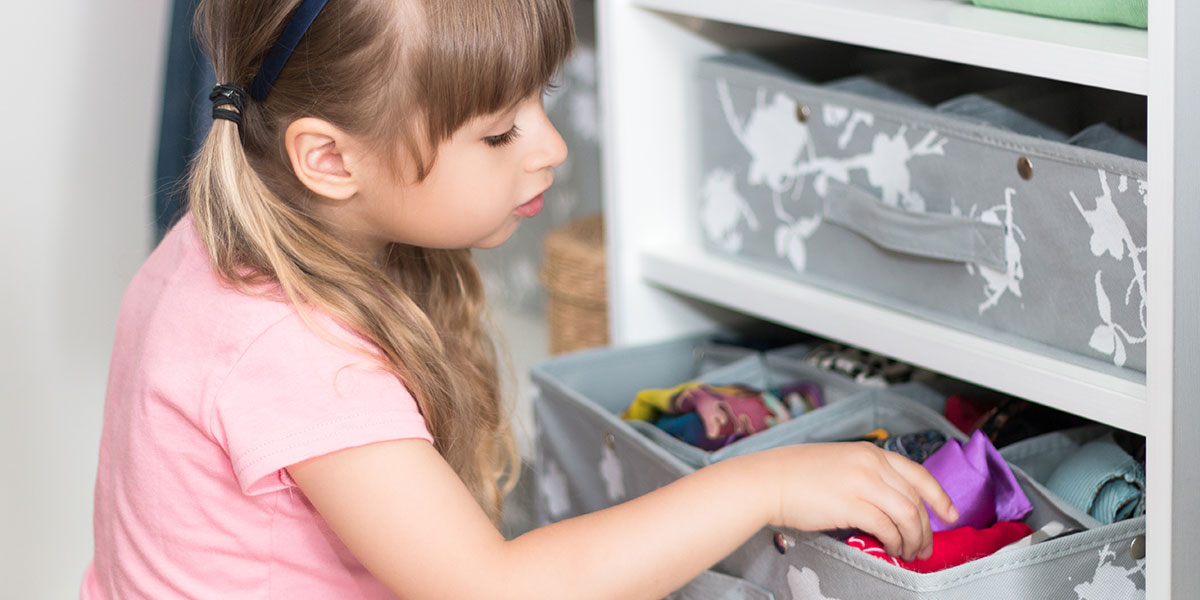
Routines for children
As Silvia Llorens and Beth Comabella indicate, “Routines teach healthy habits; they provide children with a sense of security because they know what comes next; they help kids train their biological clock, which regulates their meal times and sets their sleep cycle; they help them develop a greater sense of responsibility because they know there are tasks they must do; and lastly, routines help children learn to manage time.”
The authors recommend the following, in keeping with the child’s age:
- Two and three year olds can place their toys in their toy box and put books on a shelf.
- At age four or five, children can make their own bed.
- At six or seven, they can prepare their school bag and clothes for the following day.
- At age eight or nine, they can place their dirty laundry in the washing machine, set the table, pick up the dirty dishes, and perhaps even help in the kitchen.
- At 10 or 11, they can assist by cleaning certain areas of the house, by helping their younger siblings, taking out the trash, sweeping and scrubbing the floor, or emptying the dishwasher.
- At age 12 or 13, they can begin to babysit and take care of their younger siblings, clean windows, and go to the store to purchase a few things with a list.
As for daily routines, the authors recommend that we teach our children to place their backpacks directly in their bedrooms and hang their coats in the closet or on a height-appropriate hook on the wall immediately upon arriving home from school.
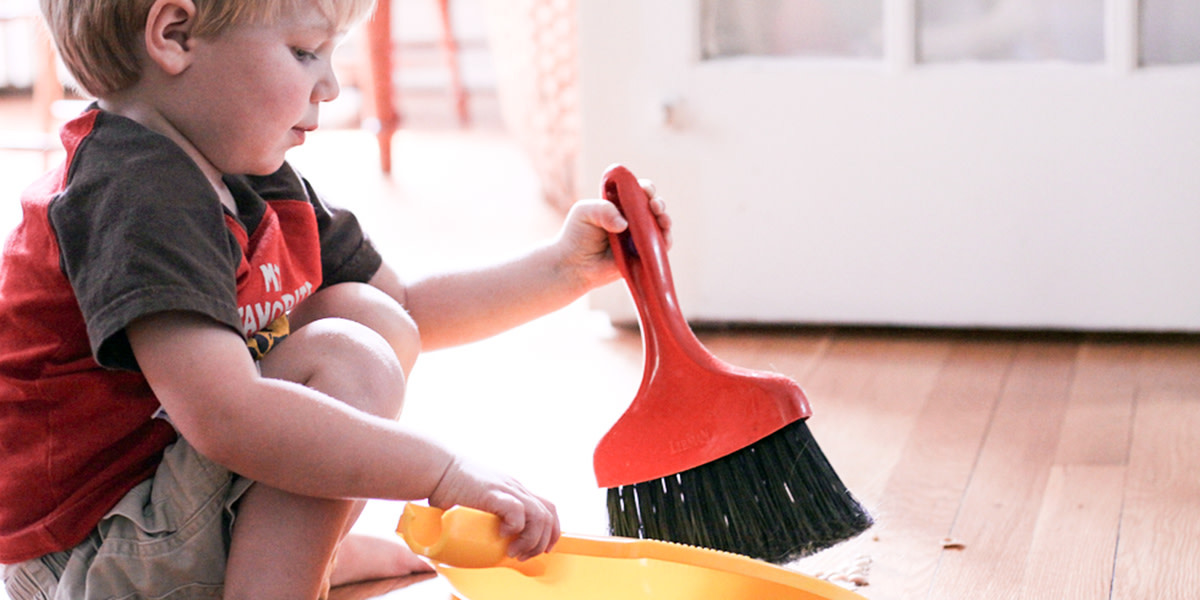
After playing or completing their homework, expect them to pick up after themselves; after bathing, make sure they place towels and toys in the proper place.
Before they go to bed, depending on their age, they should prepare their clothes and make sure they have anything else they will need for the following day.
Before leaving home in the morning, it’s a good idea that they be expected to make their beds, making sure they do not forget to pick up their pajamas and slippers.
And finally, the authors advise us not to become discouraged when instilling order, even at a young age: “Constancy is the other great secret. Managing to have your children end up being organized and exercising proper control over their space, their belongings, and their time, may seem a ‘mission impossible,’ but usually you will reap the harvest at the proper time. True, the habit of being organized may take 25 years to manifest itself, but better late than never.”
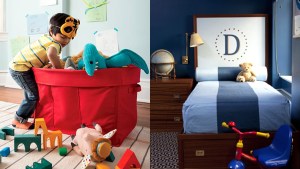
Read more:
9 expert tips for a calmer, happier child’s bedroom
This article was originally published in the Spanish edition of Aleteia, and has been translated and adapted here for English-speaking readers by Martha Fernández-Sardina.
